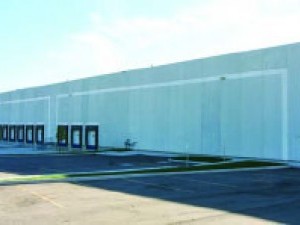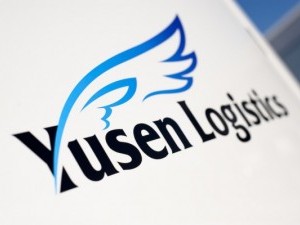Logistics in the Neo-Millennium
As we spin towards the third decade or the Neo-Millennium as I call it; logistics professionals will see changes to the face of transportation un-conceived of 20 years ago. The way we physically handle cargo will go hand in hand with technology to further guide freight movement.
Route Optimization
With the collapse of Hanjin in 2016 and carrier consolidations last year, heads are still spinning on the international scene. Carriers have been forced to re-evaluate fleet deployment avoiding duplication and maximizing sailing schedules. Within the various alliances, participants are coordinating equipment; rationalizing stowage and minimizing overlapping port calls. Conversely shippers must now wade through the “Big Three” carrier groups (The Alliance, Ocean and the M2) to determine the best routes and pricing options for goods movement. The internet provides resources for reviewing routes and carrier options. Various ports provide vessel schedules and routing guides while several websites such as Searates and Logistics portal offer tools to optimize carrier selection. On the domestic side, shippers and carriers have developed a host of interactive software designed to guide them through route optimization.
Target’s recent acquisition of Grand Junction software will enable them to better plan last mile deliveries from store to consumer. The San Francisco based firm has over 700 network partners offering trucking to distributors and 3rd Party Logistics Providers in the U.S. and Canada. Logistic Services USA LLC offers a web portal which accepts LTL shipment information then creates a list of affiliated truckers with pricing and transit information. Route XL provides an online routing guide for multiple stops. Last year UPS rolled out its “On-Road Integrated Optimization and Navigation” program. ORION as it’s called will help drivers organize their delivery schedules for maximum efficiency. The carrier even plans to expand this software application to their international markets.
Platooning Truck Moves
Would you have ever considered driving so close to the truck ahead of you that the distance between the two vehicles was less than 10 feet? That is what Peloton Technology is proposing. It’s called Platooning, the creation of a slip stream which cuts down on air draft with the object of creating more fuel efficiency for both vehicles. The trucks use a combination of the internet, GPS, radar and radio signals to speed up and brake in tandem. Tests using two trucks in a convoy produced fuel economies of 4.5% for the lead truck and 10% for the rear vehicle. A survey conducted by truckersreport.com notes that fuel cost represents 39% of the total operating cost of a commercial vehicle, so an overall savings of 14.5% is significant. Omnitracs a leader in fleet management software has invested $60 million in the system, and Peloton’s CEO Josh Switkes has piqued the interest of UPS, Volvo, Intel and Nokia in this new vehicle connection technology.
Omni Channel Distribution
Over the last decade retailers have recognized the benefits of offering both brick and mortar stores and internet shopping opportunities. The last mile of fulfillment is changing to match these broader options. Consolidators have customarily assembled merchandise from overseas vendors and built destinations specific containers. Traditionally a warehouse in the states would receive these goods and repack them for delivery to specific stores. Omni Channel distribution allows for the optimization of inventory and more centralization of merchandise movement. Distribution warehouses now double as fulfillment centers allowing flexibility in delivery between the store and the consumer’s door. Amazon’s purchase of Whole Foods for example added a new dimension to their online retail operation. Non-produce items are now available over the internet, while in-store kiosks offer Amazon’s wide range of merchandise at various pick up locations. The role of third party consolidators has also changed to match this broader network. Offering hold or ship options they now interact with buyers and sellers rather than simply executing one directional delivery orders.
The Internet of Things
Truck Platooning and Omni Channel Distribution would not be possible without real time data exchanged. Unidirectional networks are fine for static objects, but vehicles, machinery and equipment require continuous interactive connection. Devices imbedded with software, electronic sensors and internet connectivity are able to react to changes in a real-world environment. Fleet management software combined with smart devices will help domestic carriers track vehicle movement, optimize maintenance schedules and monitor electronic driver logs. As more devices interact with each other we will see machines rely less on human intervention. It is estimated that by 2020 this expanded connectivity will encompass 30 billion objects at a market value of over $7 trillion.
Block Chain Technology
Information exchange must also keep pace with real time technology. Whether we’re talking about hours of service or ocean bills of lading, documents need to follow a paper trail for all participants to see. What if these were fluid? Able to be viewed and processed, as needed and wherever required. Interactive documents placed in a virtual file will allow all parties involved to view, append or edit depending on their level of access (permission). Block Chain Technology offers this interactive capability by removing the static “hard copy” aspect of the transaction. Working in conjunction with the Linux Foundation IBM developed Hyperledger technology which is the backbone of interactive chains. A block is formed by placing documentation into a virtual file, more blocks are created for related material, and these are linked to a common ledger to form a chain of “events” within the transaction. Each block contains an imprint of the preceding and following one, linking them together within the chain. The chain becomes the common property of all participants. Because it requires a level of permission no access is granted without the proper encryption codes. No person or organization can make changes or add documents without the consensus of all, making it secure and tamperproof. Maersk noted that a single shipment can go through 30 or more hands and as many as 200 interactions before it reaches its destination. In order to test hyperledger technology in the field, Maersk and IBM have teamed up to undertake block chain logistics. Working with ocean carriers, terminal operators, shippers and forwarders, the team intends to digitize shipping documents to create a paperless chain which will follow the shipment from end to end. They claim that digitizing the supply chain will not only make it more secure but potentially save the industry billions of dollars in duplication and document redundancy. Customs and Homeland Security also see the value in digital transport documents. They have accepted the challenge of processing paperless entries which can be linked to the shipments block chain.
Moving forward
We stand on the brink of a new era, a neo-millennium. One in which man will guide machines rather than control them. Our input will be no less important; it will simply evolve from a static management of information to a fluid interaction with it. Over 4.1 billion internet users controlling everything from phones to desk lamps will buy and ship more of the same from the cloud. Domestic and International carriers will rely on technology to guide their fleet on more direct and fuel efficient routes while virtual documentation accompanies the cargo. As Nikola Tesla once said “The day science begins to study non-physical phenomena, it will make more progress in one decade than in all the previous centuries of its existence”. So, do not cling to the old but embrace the new, it will be an exciting time! Are you ready?
© Copyright 1999–2024 American Journal of Transportation. All Rights Reserved



